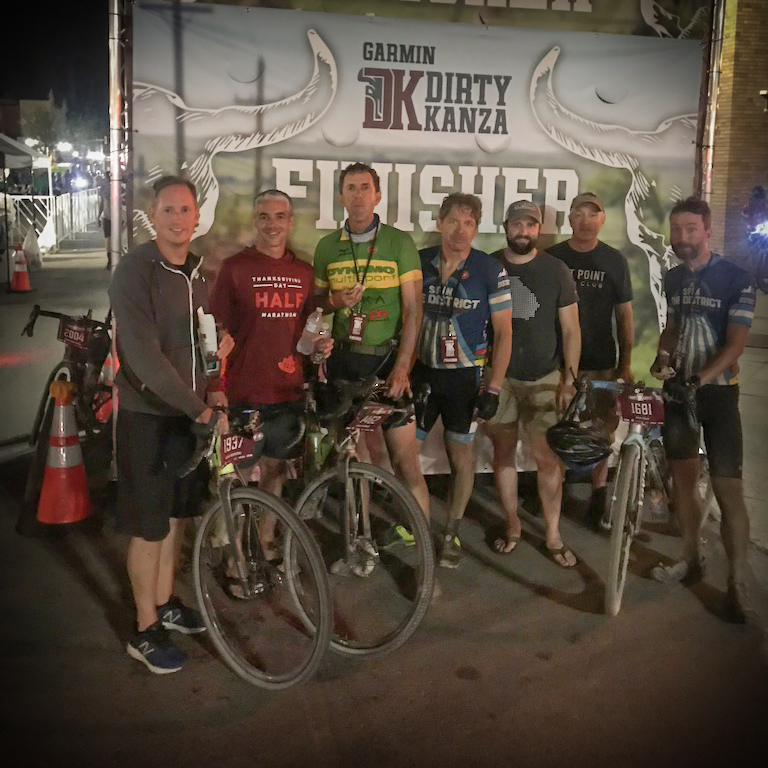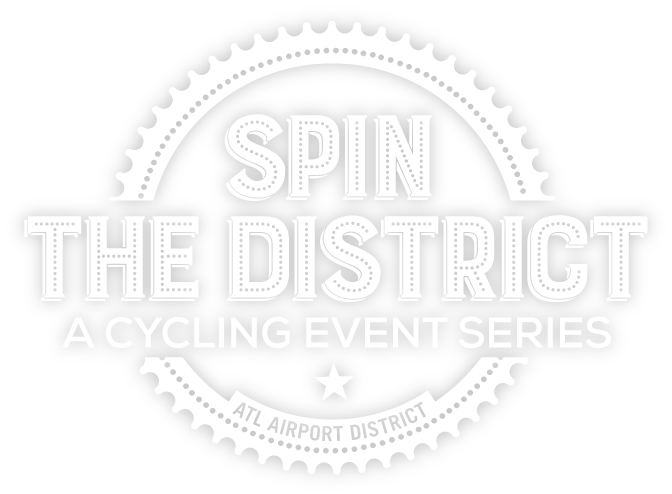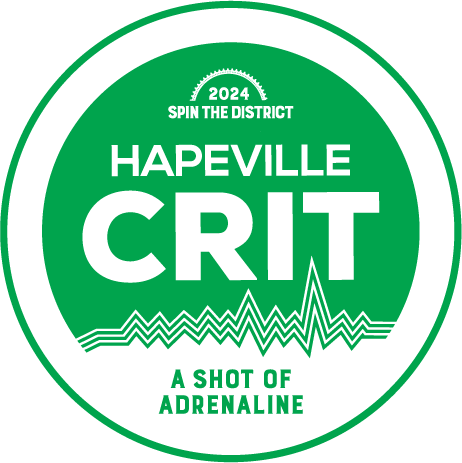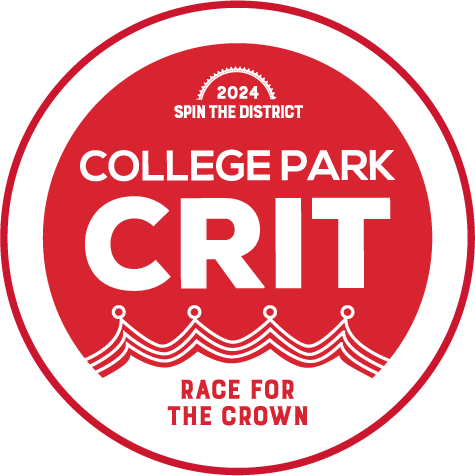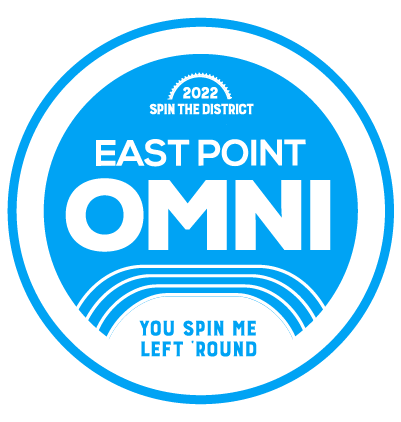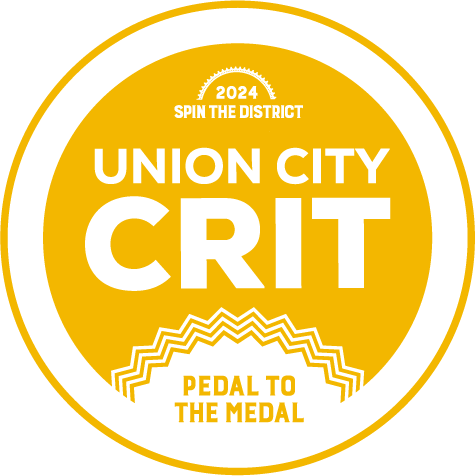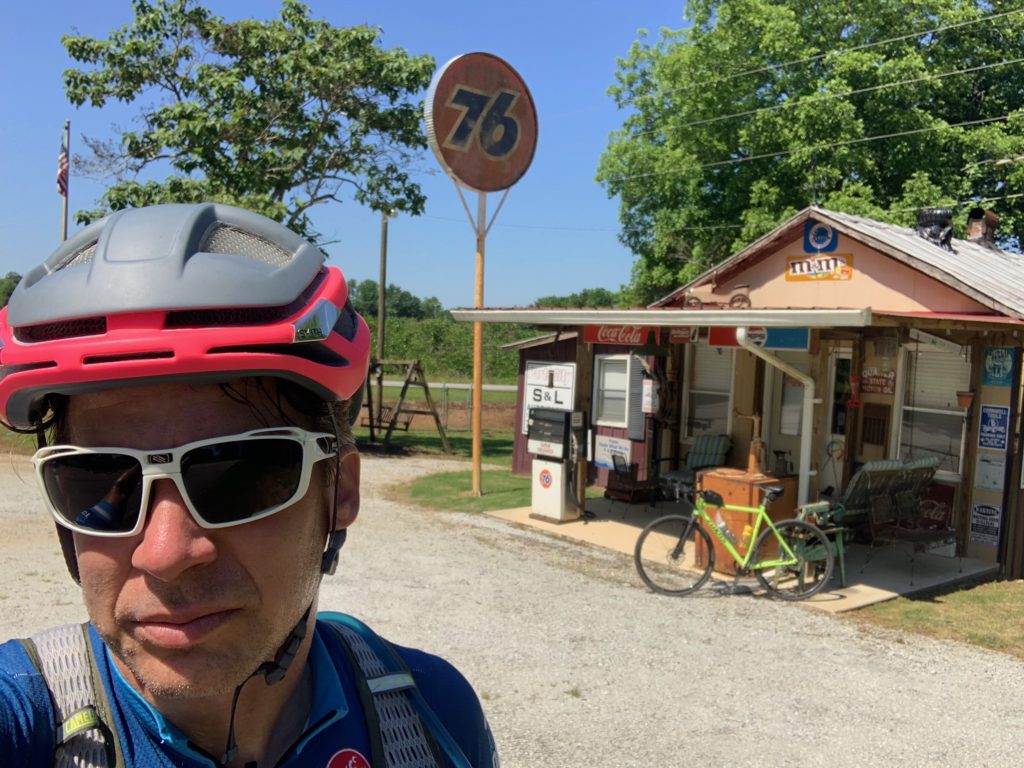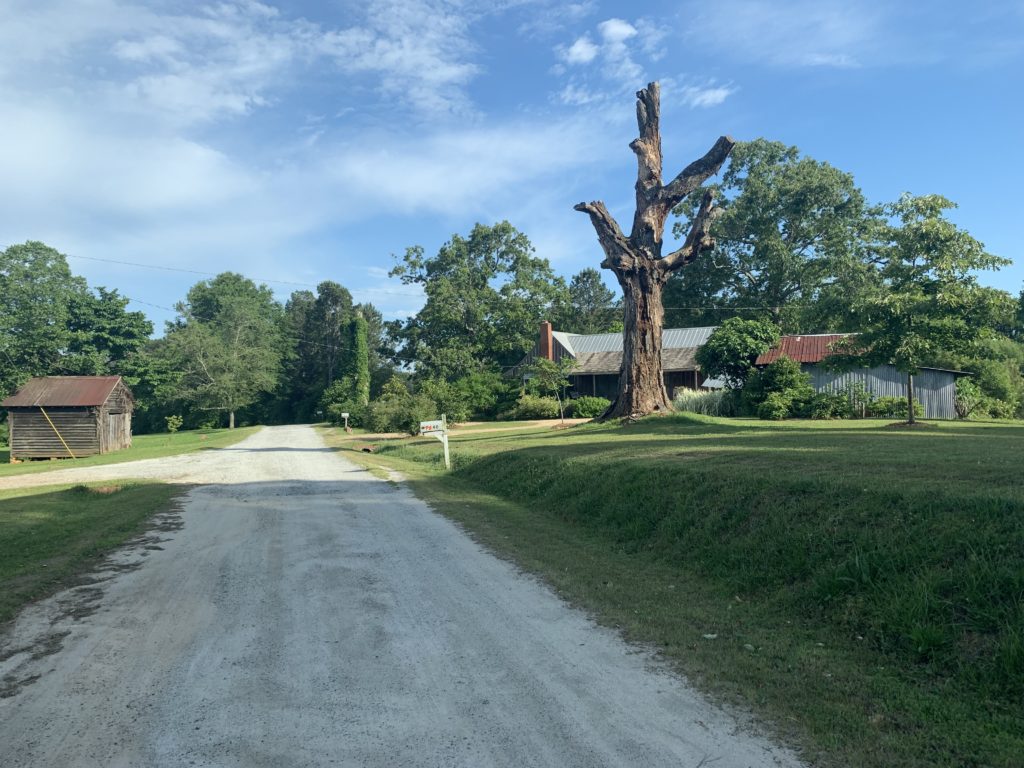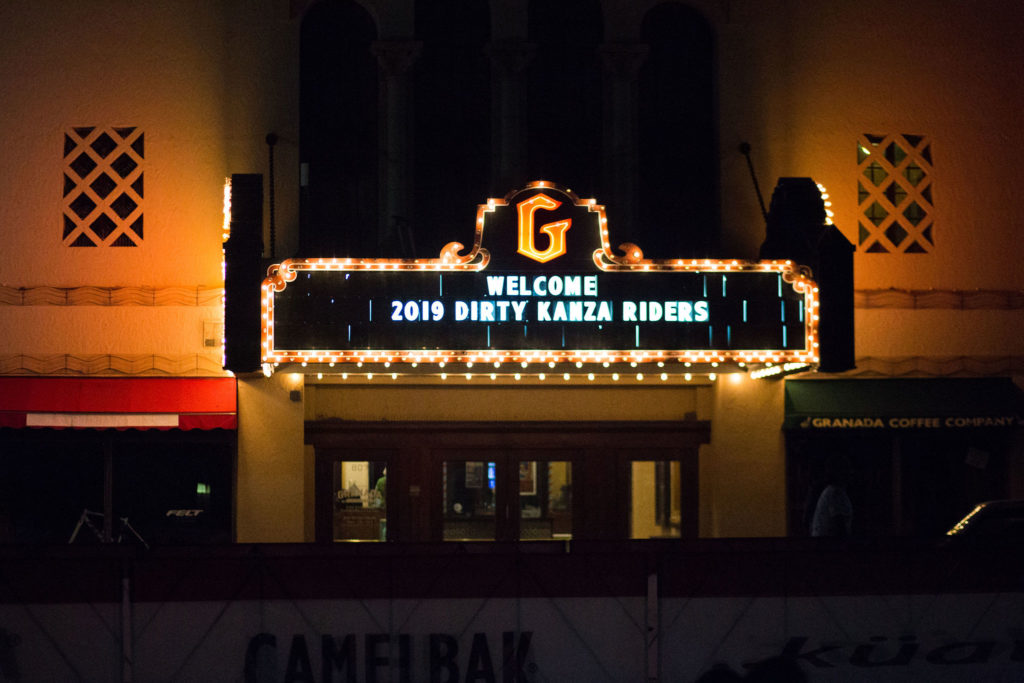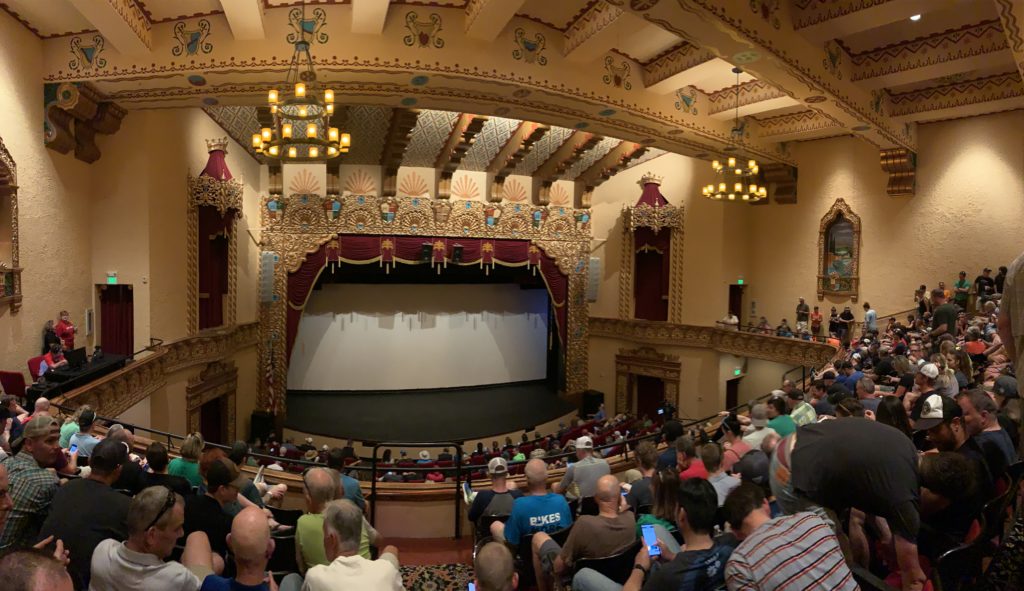by Wayne Whitesides – crazy event marketing guy
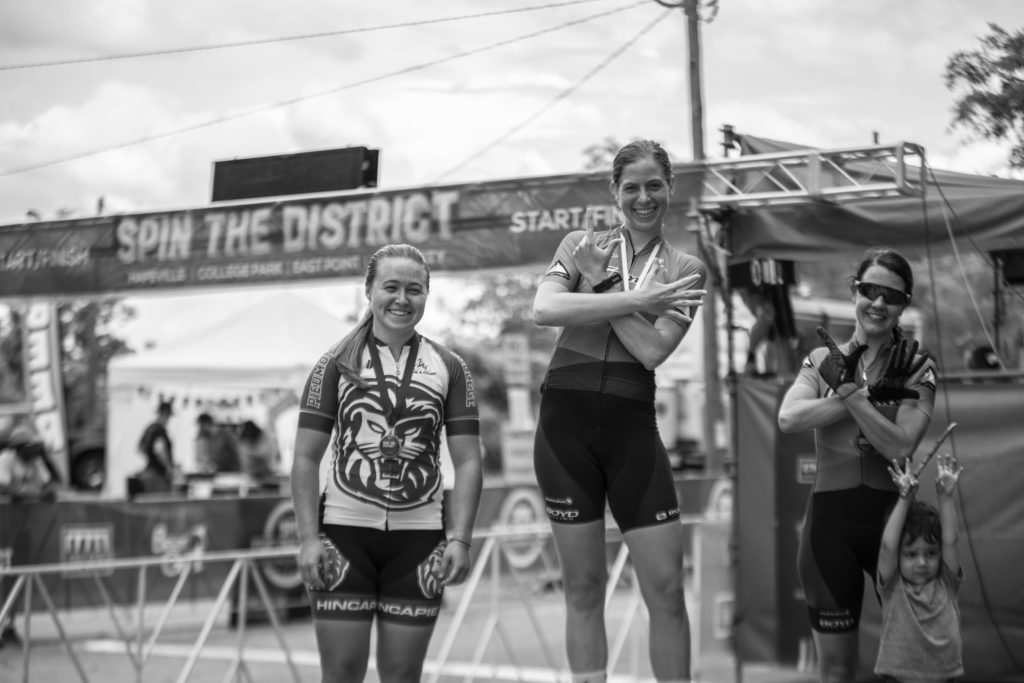
It’s been a fast two months for me with racing, training, marketing, and promoting all things cycling. I’m back from a trip out west and now getting ready for our next cycling events – East Point Velodrome races and the Union City Gran Fondo & Gravel Grind.
It was a cycling party in the streets!
Before I go further, I wanted to briefly comment on the first two events we put on in the ATL Airport District. Spin the District, it’s called, kicked off our second year this May with a two-day criterium race series. We filled the streets of Hapeville and College Park, Georgia with a stacked field of quality riders (from 24 states and 13 countries, thank you very much) and threw bigger parties than ever. (Fond memories of tacos and crawfish!) It was a magnificent sight to see such great racing happen in my backyard. Adding the Hapeville and College Park Criteriums to the national caliber USA Crits Speed Week Series was just the boost we needed. Next year will be bigger and better still, so mark your calendars for the first week in May. Also, be on the lookout for an overdue proper recap of the weekend.
Soon after the criteriums ended, with close to 3,000 training miles in my legs and the beginning of a stomach bug, I packed up my gravel bike and gear into a 32-foot rental camper with six of my buddies. (Jason “TrailDog” Hanlin, Dan Raudebaugh, Matt Connors, Jason Linscott, Jacob Dearolph and Dennis Decker were all there. No, none of them caught the stomach bug.) We were headed west for Kansas and the 202-mile gravel race known as Dirty Kanza.
Planning for a race while training for another.
I should mention that throughout this experience, I was thinking about the Toughskin150, a mixed-gravel race that I have been planning that will be part of the Spin the District Series coming this fall. (Check it out here.) I was inspired by ultra-gravel races like Dirty Kanza, Super Skaggs, and the Belgian Waffle Ride, and the painstaking route planning for the September event comprised most of my training leading up to leaving for Kansas. And painstaking it was, both figuratively and literally. I took great pains to develop a grueling route to bring in souls looking to dig deep and fight off their inner demons to finish, scouring Google Maps and gravelmaps.com for every hint of loose road surface, then driving around and around hunting down roads that link up to create a safe and desirable course to meet the standards of my inspirations. And I felt great pain in the process, having now ridden pretty much every speck of gravel within a 100-mile radius south of Atlanta.
Work or play? How about both!
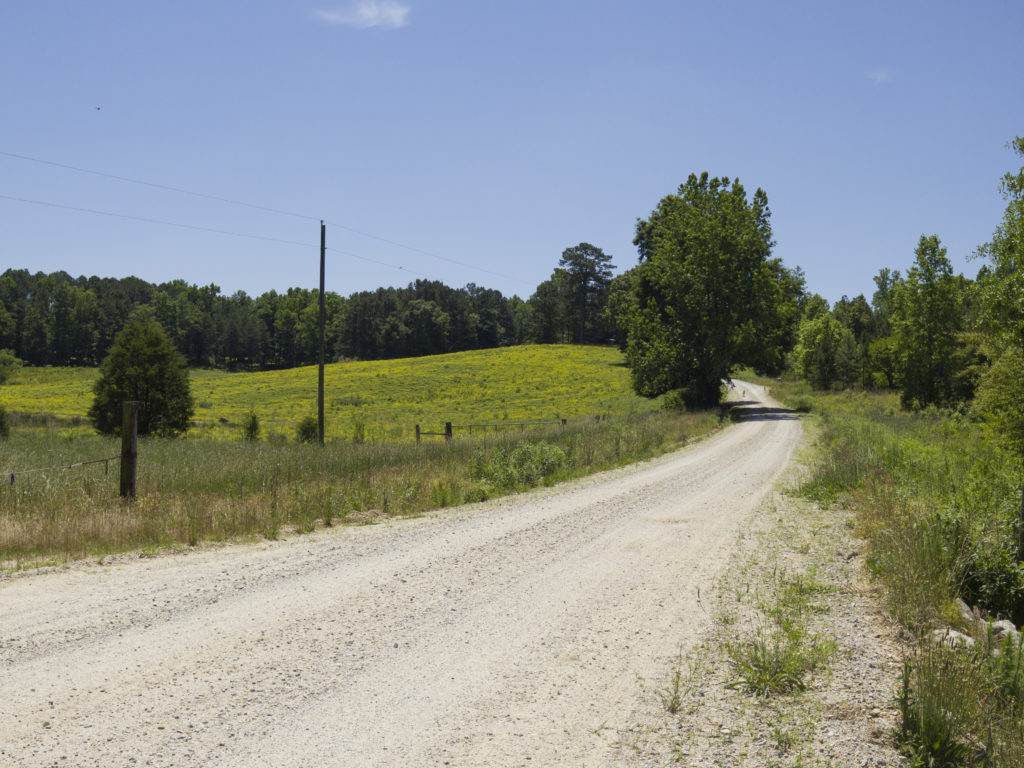
I’m a partner at the advertising agency that is creating all the design and marketing material for the ToughSkin150 and all the Spin events, and a week before we left to race Kanza, I selfishly declared a “day of work” was necessary so that I could go out and “test” the route before announcing it. (It was technically true!) Of the proposed 160-mile, 10,500-foot-total-elevation course, I had enough time (10 hours) and energy to do 120 miles and 2,000 feet short of the total climbing. After that day, I headed west wondering how in the hell I was going to get another 6 hours out of my legs in a day and finish Dirty Kanza and/or holy hell was my Toughskin150 route just too hard!?!? (More on the Toughskin150 and our crop-length counterpart Husky100 in future posts. Back to the Dirty Kanza.)
What kind of sick twisted event are you going to?
The promoters of Dirty Kanza had developed a gravel course that appeared on paper to be the toughest challenge since the race’s inception in 2007. It was a northwesterly course that would mean strong headwinds in the mid-day sun, but a nice tailwind for the last 50 of the 202-mile day. The challenging route also included 10,000 feet of constant up and down rollers and a lot of B gravel roads. In Kansas and most of the Midwest, you have paved roads, standard gravel roads, and B roads, which are gravel/dirt/sand/grass roads that get little-to-no maintenance and are typically only used by farmers—and even farmers avoid them when they can. Some B roads are little more than two deep ruts separated by tall grass.
The weather had been horrible for weeks prior, the Arkansas River flooded, and reports from all the gravel blogs were that the start town of Emporia was underwater and to expect plenty of “peanut butter” mud on the course. Peanut butter mud! Luckily, the course dried out just in time and there was little mud. I still don’t know what peanut butter mud is like, but after riding over the dried-out B roads with 12-inch-deep tire ruts, I don’t want to find out. There’s no way I could’ve finished the peanut butter version.
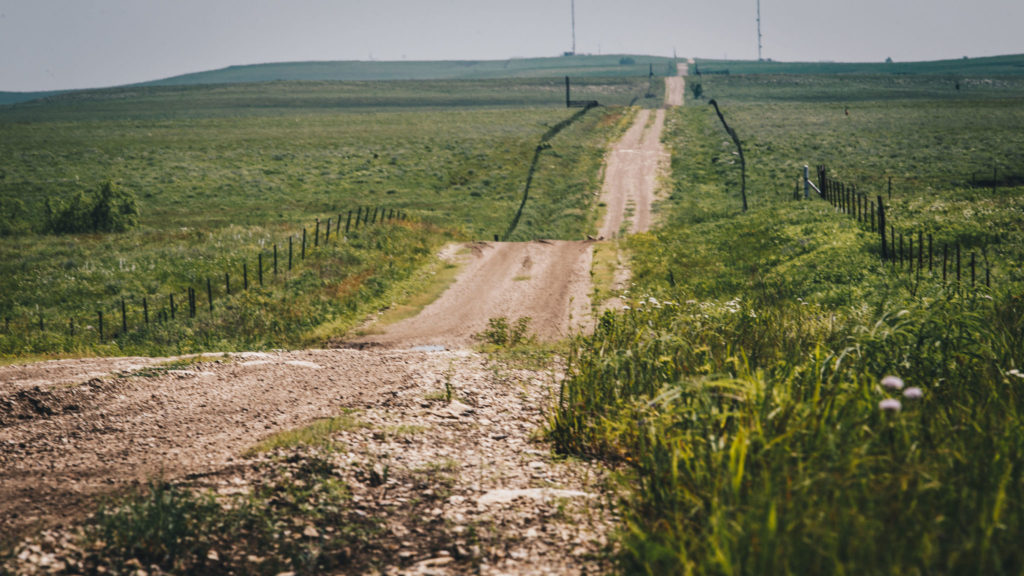
I’ve gotten this far and realized some of you may still not know what Dirty Kanza is and why I’m yammering about it. Well, Dirty Kanza (just Kanza for short) is the country’s premiere one-day gravel bicycle race. It has a 100, 200 and now 350-mile version. For most, the race is more within yourself than against another rider, and finishing the race is a huge achievement. The event is held in the Flint Hills, which are notorious for giving riders fits with flats and mechanicals. For those of you saying, “Kansas is flat,” you’ve never seen the Flint Hills. And as I mentioned, the B roads are a bit of a mess, though extremely fun!
What makes it especially hard, though, is that for the most part it’s “Self Supported,” meaning you are in charge of you; food, water, and repairs are managed by you and your crew only in two designated support areas. Support was not allowed on the course. If you broke something you had to fix it. If you ran out of water, good luck. For the 200 mile version, support came at miles 64 and 150 this year, plus a water-only stop at mile 120, and an unexpected-but-appreciated water-only stop at mile 90, provided by pro cycling team sponsor EF Education. (Thanks, y’all. I needed it.) Between those stops, you needed to carry enough food and water to get you to the next point. For me, that meant adding an average of 12 extra pounds of gear on my bike and back. I estimated I’d burn 7,000–8,000 total calories and go through 14 liters of fluid (roughly 21 water bottles). In the end, I needed way more water, and I lost my appetite early on—a terrible combination. I know I didn’t come close to replenishing the calories burned. A rookie move.
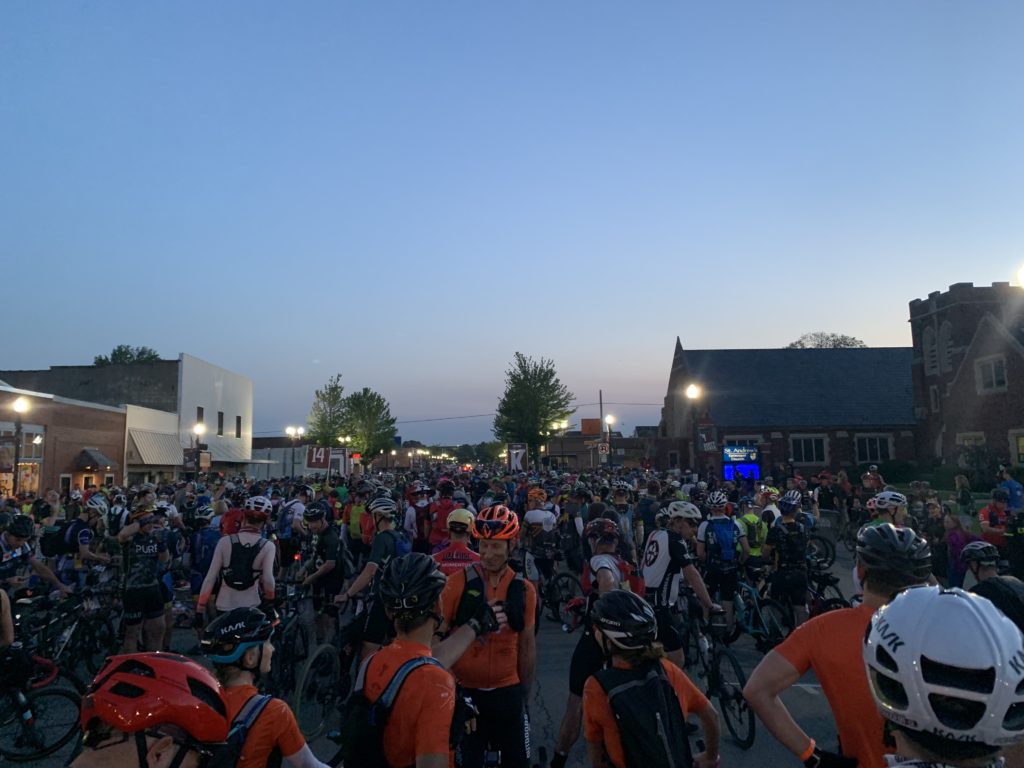
For the 200-mile event, we were among 1,205 riders randomly selected through a lottery from around 3,000 applicants. Our fellow riders included some of the best road pro men and women and gravel specialists from around the world, with the likes of World Tour riders Taylor Phinney, Peter Stetina, Lachlan Morton, Alex Howes, Kiel Reijnen, and last year’s winner Ted King. Some of them suffered from numerous flats, but they all got the beatdown in the end by gravel specialist Colin Strickland out of Austin, who broke away from the group with 95 miles to go and completed the course in a record 10 hours — hours upon hours ahead of me. Equally impressive was female rider Amity Rockwell, from San Francisco, who finished in just under 12 hours! For them, this truly was a race, and from what I’ve heard it sounded pretty epic. (I recommend the Velonews article “Commentary: A perfect battle at Dirty Kanza 200” by Fred Dreier. It’s an inspiring read.)
While Dirty Kanza is of course about fitness and stamina (our event was 200 miles in one day after all), it’s even more about mental strength. You need to know how to fight off the uncontrollable urge to quit, the inner demon I mentioned earlier. Even the pros had to dig just as deep I did—just a lot faster.
Then again, for me, coming from a velodrome/track racing – sprinter – background, anything over one kilometer is too much. Granted, it’s as fast and as hard as you can go, so it’s not exactly apples to apples. I had also retired from racing a few years earlier, so I restarted my training and mental preparedness from scratch, 20 pounds overweight and 48 years young. I suffered! I suffered like you can’t imagine. Or maybe you can. My little stomach bug decided it wasn’t quite finished with me, and the heat and lack of shade took a huge toll. This was the hardest and dumbest thing I have ever done.
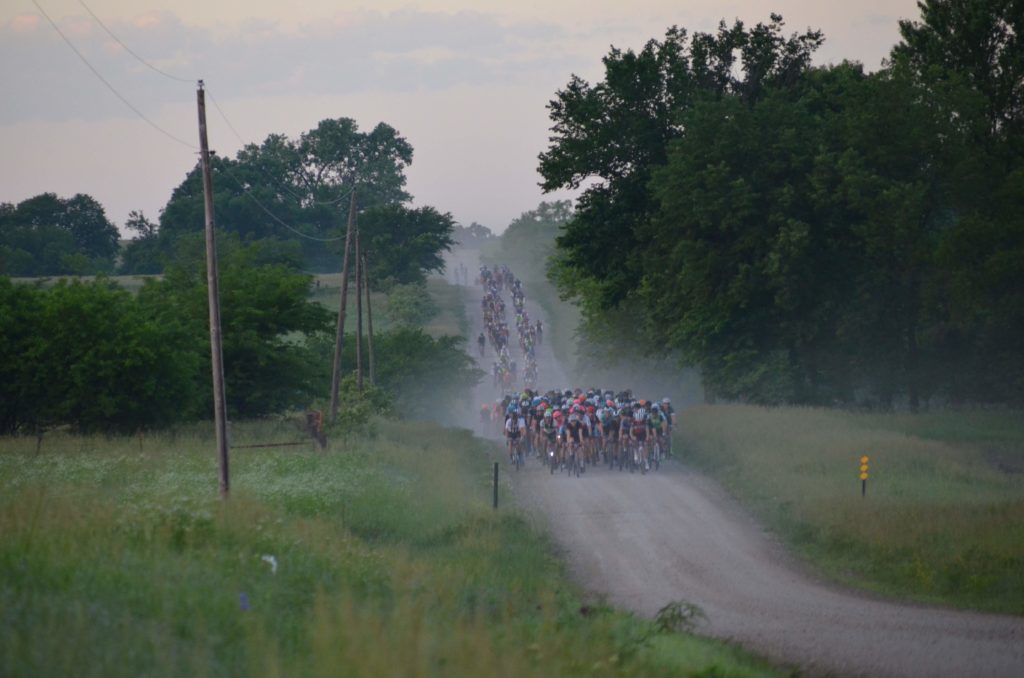
My goal was to finish in a lofty 15 hours, not accounting for temps that would reach 107° according to my cycling computer, or the… ummm… health issues I’ll save for another article. I hobbled in at a very proud-yet-humbled 19:17 with Trail Dog Hanlin and Dan by my side, whom I caught up to in the wee hours of the night, both going through their own struggles. My whole party finished, all five of us who raced. Matt powered through first in 15:45, and Jason L was right behind in 16:08. We all have a tremendous amount of gratitude to Jacob and Dennis who came along to give us support. They quietly and effectively kept us moving by keeping our equipment running and in order, cooling us down, forcing us to eat, and most importantly pushing us back out to finish without really saying anything. We could not have finished without them. I cannot thank them enough. (And here’s a nod to all the support crews. You all rock!)
Next week, I’ll write a detailed play-by-play of my day and the struggles I had and witnessed along the way. Of the 1,205 riders who started, only 852 finished. Fighting the cutoff times in the latter half of the day, I saw most of the non-finishers strung out along the way. I felt and suffered with them. For most of us, just putting one pedal stroke in front of the other was all we could muster.
Even though I spent ten hours swearing off the race and silently cursing out the promoters for not having a third aid station, I now can’t stop thinking about doing it again.
